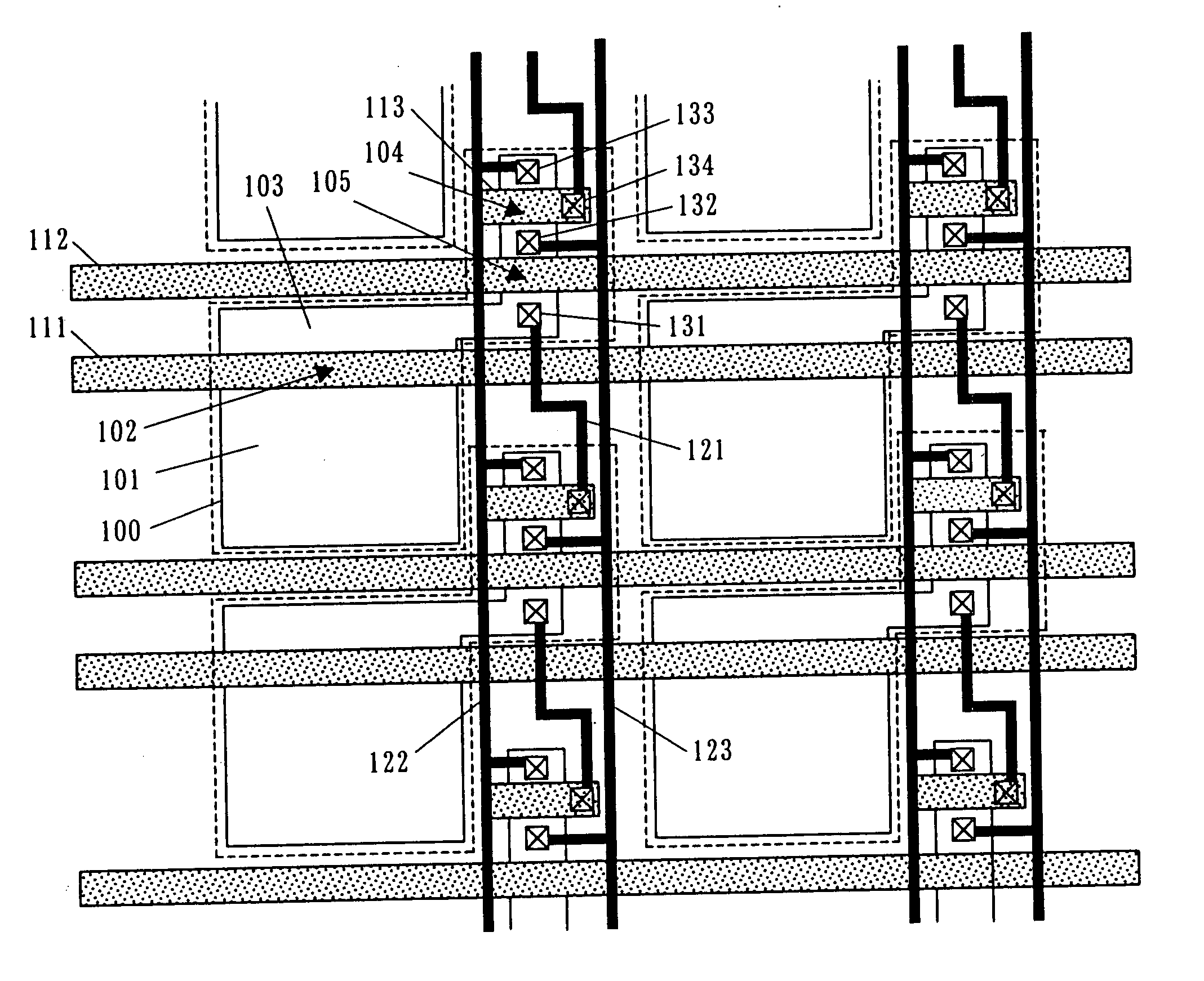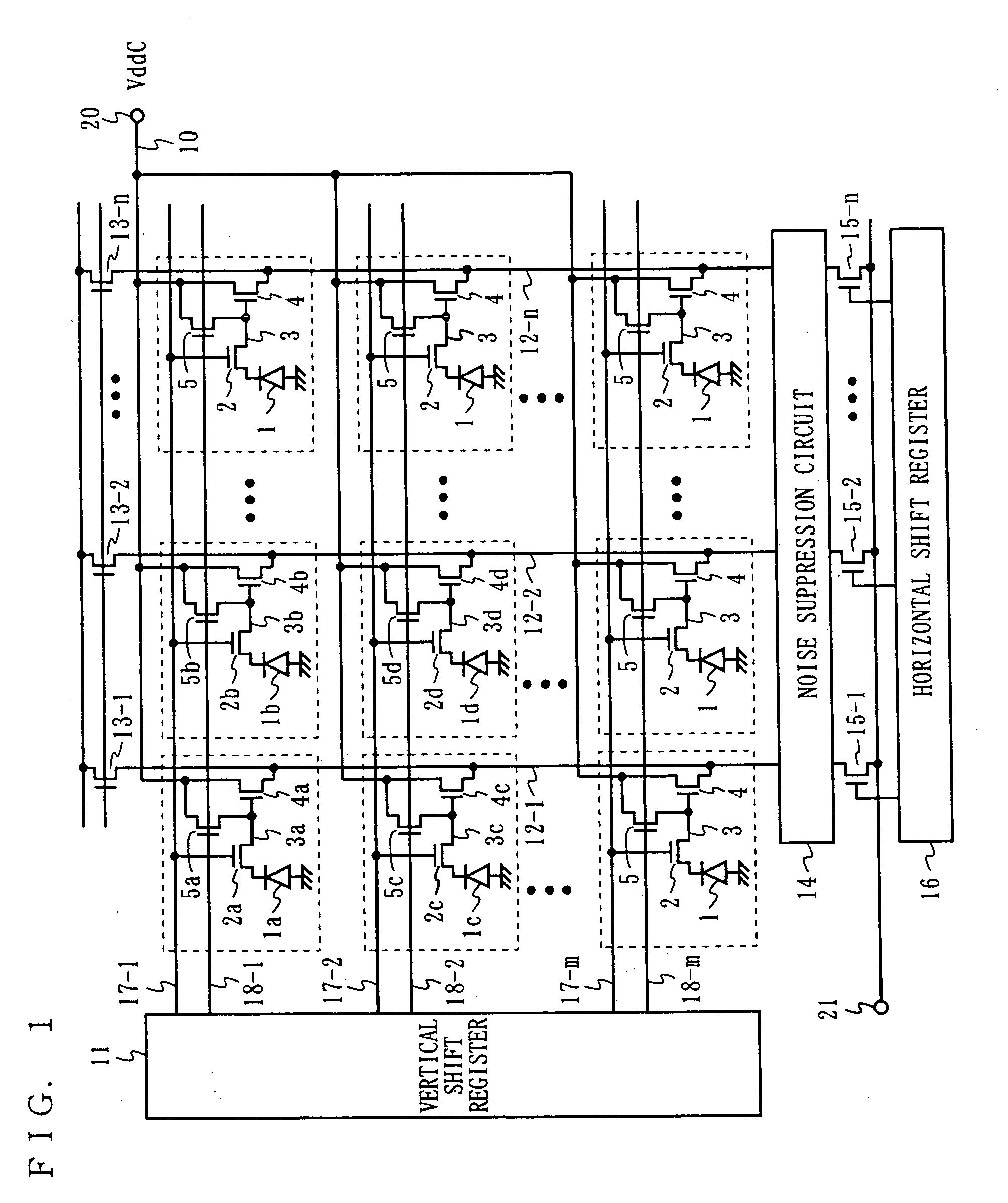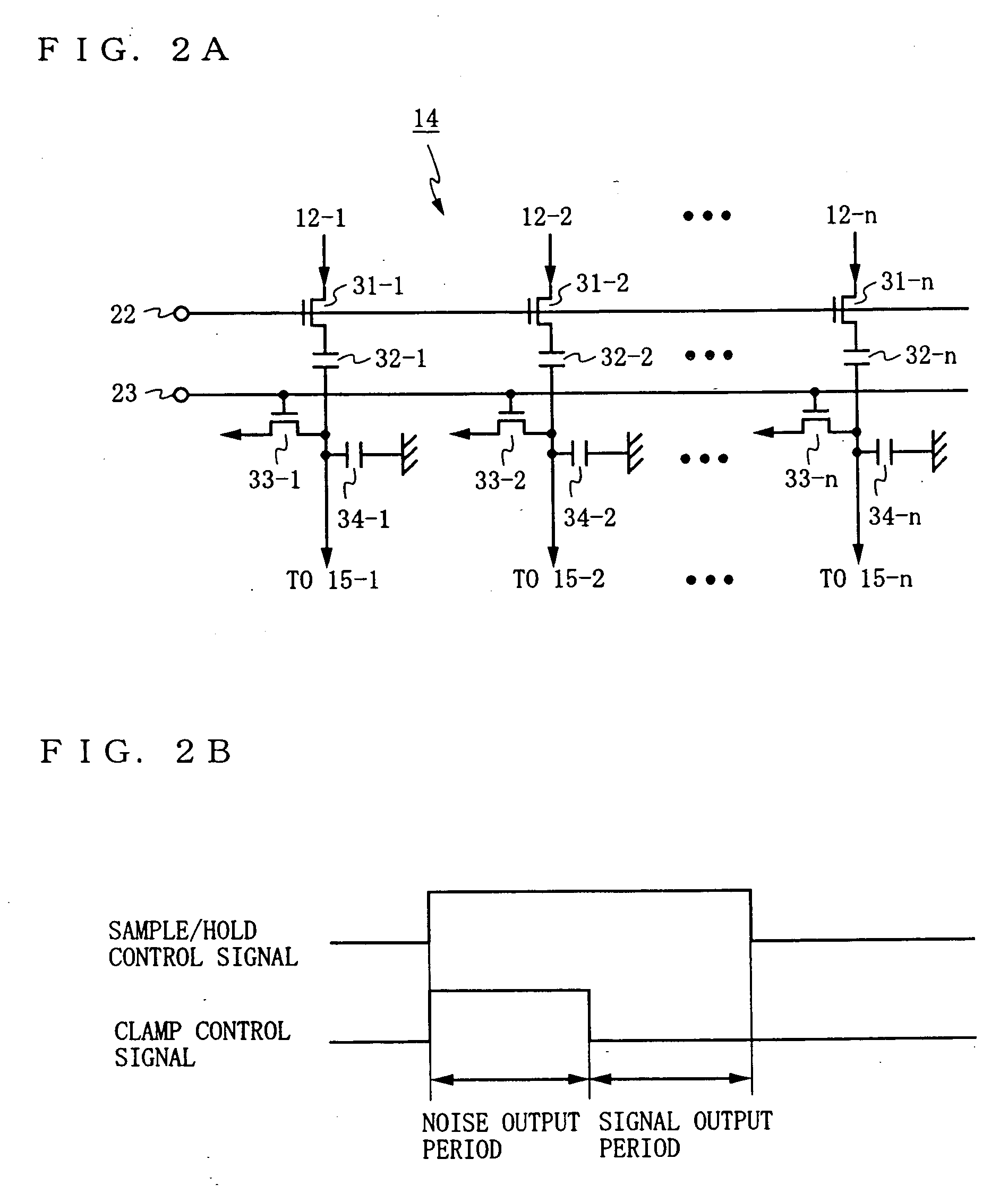Solid-state imaging device
- Summary
- Abstract
- Description
- Claims
- Application Information
AI Technical Summary
Benefits of technology
Problems solved by technology
Method used
Image
Examples
Embodiment Construction
[0037] Prior to descriptions of a sensor according to an embodiment of the present invention, an exemplary sensor in which photosensitive cells are each formed by three transistors is described. The exemplary sensor illustrated in FIG. 1 includes photosensitive cells (each surrounded by a dotted line) arranged in an m×n matrix, a power supply line 10, a vertical shift register 11, n vertical signal lines 12-1 through 12-n, n load registers 13-1 through 13-n, a noise suppression circuit 14, n horizontal transistors 15-1 through 15-n, and a horizontal shift register 16. Each photosensitive cell includes a photodiode 1, a transfer gate 2, a floating diffusion layer section 3, an amplifier transistor 4, and a reset transistor 5. Of four photosensitive cells on the first and second rows and columns in FIG. 1, the components included in the same photosensitive cell are provided with the same suffix (a through d) for identification. The photosensitive cell has a feature of including three ...
PUM
 Login to View More
Login to View More Abstract
Description
Claims
Application Information
 Login to View More
Login to View More - R&D
- Intellectual Property
- Life Sciences
- Materials
- Tech Scout
- Unparalleled Data Quality
- Higher Quality Content
- 60% Fewer Hallucinations
Browse by: Latest US Patents, China's latest patents, Technical Efficacy Thesaurus, Application Domain, Technology Topic, Popular Technical Reports.
© 2025 PatSnap. All rights reserved.Legal|Privacy policy|Modern Slavery Act Transparency Statement|Sitemap|About US| Contact US: help@patsnap.com



